If you don’t know how to purify water for survival or when SHTF occurs, just taking a look at the CDC’s (Centers for Disease Control and Prevention) National Outbreak Reporting System will show you that disease outbreaks associated with drinking water are a common occurrence.
In 2013–2014, for example, there were 1006 reported water-related illnesses, caused by Legionella, chemicals, toxins, and parasites such as Giardia and Cryptosporidium.
We all need to know how to ensure a clean drinking water supply!
How to Purify Water as a Survival Skill
Knowing how to purify water for survival is a skill we must all learn today. When disaster strikes, there is a high chance that we won’t have access to bottled water or other forms of ready-made drinking water.
You can prepare for survival by making sure you’ve got bottled water stored in bulk, but at some stage, your stores will run out. There are a few ways in which you can purify water for survival, and I will run through those in this article.
I won’t focus much on purification systems like water filters, life straws, etc. The primary purpose of this post is to run through options of how to purify water for survival or in the wild and the organisms we’re trying to remove.
The aim is to cover things you already have in your home, or things you can buy in bulk to purify water in bulk; sustainable solutions, rather than the ones needing new filter cartridges.
I’ll also include a water purification method you can grow in your backyard!
How Much Water Do We Need per Day?
Our bodies thrive on water. We’ll be OK without food for up to three weeks, but water is a different story altogether. The human body can only handle around 3 days without water.
To function properly, an adult will need around half a gallon of water for survival each day. If you live in a hot climate, are working hard, or performing strenuous work, you’ll need even more.
The same applies to people who are ill, nursing mothers, and children. It is recommended that you store at least 1 gallon of clean drinking water per day, per person and for each pet.
We’ve all seen movies where water is rationed; people with dry, cracked lips, desperate for their one-sip-per-hour.
However, the Red Cross recommends you not ration your drinking water. They recommend that you try to minimize the amount of drinking water you need by staying calm and cool, and that you drink as much as you need today. Worry about tomorrow, Well, tomorrow.
Priority Steps for Water Purification
Step 1: Use bottled drinking water if you have it.
Step 2: If you don’t have bottled drinking water, boil water to kill most things. Make sure you filter dirty water first through a cloth or coffee filter or let it sit so dirt can settle to the bottom.
Step 3: If you can’t boil water, use bleach to purify it. Bleach won’t kill all disease-causing things, but it’s better than nothing.
Again, filter or settle it first if the water is dirty. Ratios for how much bleach is needed to purify water will be added further down. Wait for at least half an hour before drinking, or store it for later in clean, sealable containers.
Why Do We Need to Purify Water?
What exactly are we trying to purify out of our drinking water? Well, there’s some really scary stuff out there that is causing anything from runny poop to death. Let’s take a look at the main culprits.
Protozoa
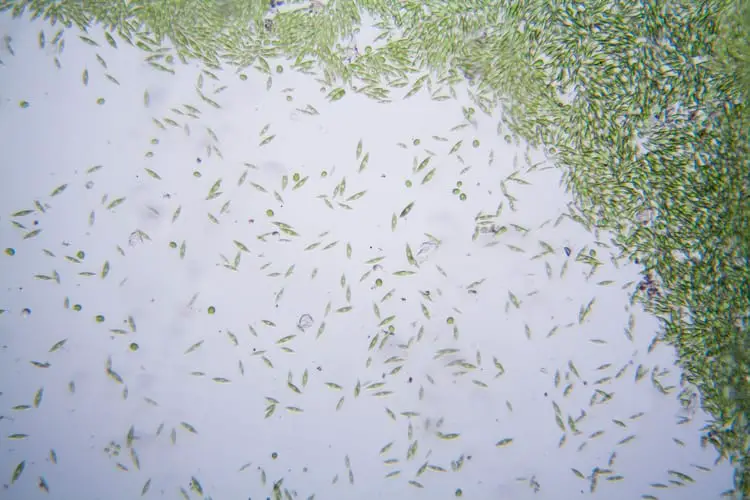
Protozoa organisms include the infamous Giardia, as well as Cryptosporidium. is the cause of the largest waterborne disease outbreak ever recorded, affecting around 400,000 people in Milwaukee in 1993!
Both organisms cause gastrointestinal problems like cramps, diarrhea, and vomiting. Feces from both humans and animals are the main culprits in contamination.
How do we knock Protozoa on the head? Boiling. A rolling, one-minute boil has very high effectiveness in killing Giardia and Cryptosporidium.
We can also filter them out with absolute 1-micron filters that are of NSF standard.
We can use chlorine dioxide water purification tablets against Cryptosporidium as well, as long as the manufacturer’s instructions are followed to the letter.
Iodine and chlorine water purification tablets are not effective against protozoa.
Bacteria
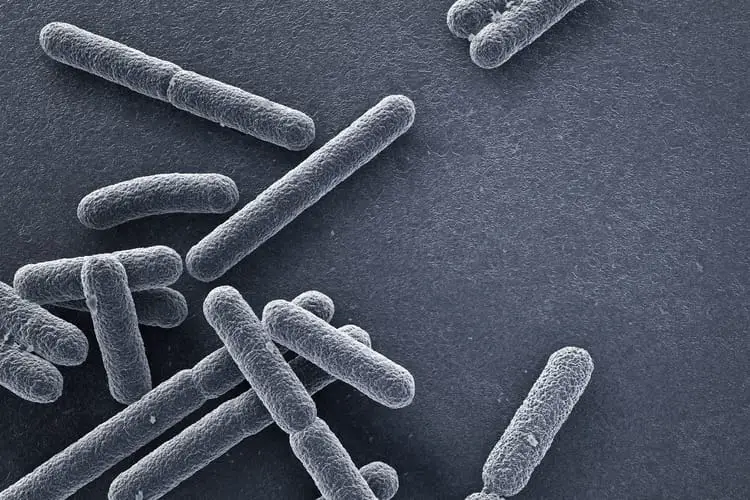
Worrying bacteria include E. coli, Salmonella, Shigella, and cholera. These guys love warm environments!
Issues caused by them are generally gastrointestinal: cramps, diarrhea, and vomiting. Feces from both humans and animals are the cause of contamination.
How can we kill these bacteria and purify our drinking water? Boil again!
A rolling boil for one minute has very high effectiveness in killing bacteria. Drinking water filters are not overly effective, but chlorine and iodine tablets give good purification results.
Viruses

The viruses to worry about include hepatitis A, rotavirus, Polio, Norwalk virus, and enterovirus. These guys are tiny, between 0.02 and 0.2 microns, which is why filtration is not effective at all.
To combat viruses, boil. Boiling water for one minute has very high effectiveness in killing them. Iodine and chlorine tablets can also be used, with high effectiveness.
A word of warning regarding iodine: water that is purified with iodine is NOT recommended for pregnant women, people with thyroid problems, or some other conditions. It should also not be used for more than a few weeks at a time. Do your research before using it!
Potable Aqua Chlorine Dioxide Water Purification Tablets – 30 Count Sawyer Products SP128 Mini Water Filtration System, Single, Blue
Sawyer Products SP128 Mini Water Filtration System, Single, Blue Potable Aqua Water Purification Tablets With PA Plus – Two 50 count Bottles
Potable Aqua Water Purification Tablets With PA Plus – Two 50 count Bottles
How to Purify Water by Boiling

Boiling water will kill most things that cause disease. Make sure you bring the water to a rolling boil and keep it boiling for 1 minute. Let the water cool and store it in clean, sealable containers.
If you are at high altitudes (discussed in detail below) and are wondering how to purify water for survival or in an emergency, you’ll need to boil the water longer.
At high altitudes, atmospheric pressure is lower. This means that water’s boiling point is lower, and even though it comes to a boil quicker, it takes longer to reach the right temperature.
As a result, food takes longer to cook, and water takes longer to get to the right heat for water purification.
Does Boiling Water Purify It?
As we learned above, yes, boiling water purifies it. Follow the priority water purification steps: 1. use bottled water, 2. boil water, and 3. use bleach.
If the water is dirty, filter it first with a clean cloth or let the dirt settle before scooping clean water off the top. Then, bring to a rolling boil for a minimum of one minute before storing in clean, sealable containers.
If you are at a high altitude (greater than 6500 feet or 2000m), boil for three minutes. The EPA has a lower altitude recommendation for a three-minute boil at 5000 feet or 1000 meters. To be safe, I recommend a three-minute boil at 5000 feet or up.
How to Purify Water With Bleach
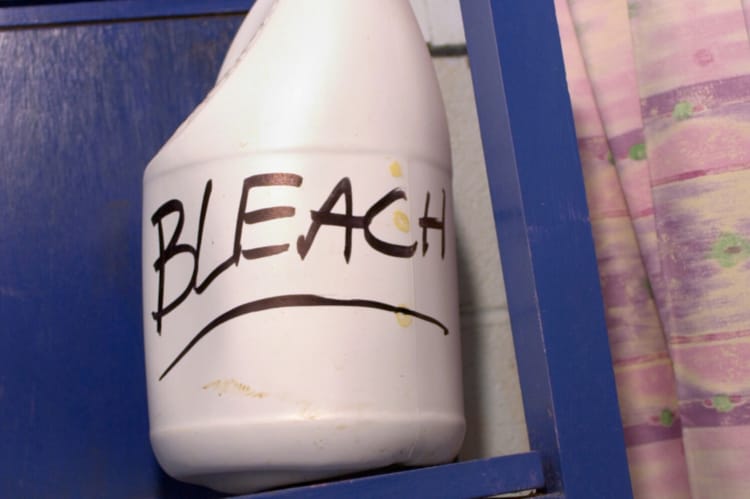
After bottled water and boiling water, bleach can be used to purify water for drinking. However, only use bleach in drinking water with extreme caution and only use recommended safe doses. Bleach is extremely dangerous, even in even small amounts.
How Much Bleach to Purify Water?
The recommended rates are as follows:
For bleach with a 5-6% concentration of sodium hypochlorite (check the label):
- 2 drops or 0.1ml of bleach for 1 quart of water
- 8 drops or 0.5ml of bleach for 1 gallon of water
- 40 drops or 2.5ml of bleach for 5 gallons of water.
Note: if the water is cloudy, dirty, or really cold, double the amount of bleach.
For bleach with an 8.25% concentration of sodium hypochlorite (check the label):
- 2 drops or 0.1ml of bleach for 1 quart of water
- 6 drops or 0.5ml of bleach for 1 gallon of water
- 30 drops of 2ml of bleach for 5 gallons of water.
Note: if the water is cloudy, dirty, or really cold, double the amount of bleach.
If you’re not sure of the concentration of sodium hypochlorite in your bleach:
- 10 drops or 0.5ml of bleach for 1 quart of water
- 40 drops or 2.5ml of bleach for 1 gallon of water
- 200 drops or 12.5ml of bleach for 5 gallons of water
Note: if the water is cloudy, dirty, or really cold, double the amount of bleach.
How Much Bleach to Purify Water 55 Gallons of Water?
Keeping in mind the ratio listed above, here’s the amount of bleach to purify water for a 55-gallon drum.
For bleach with a 5-6% concentration of sodium hypochlorite (check the label):
- 440 drops or 27.5ml of bleach for 55 gallons of water.
For bleach with an 8.25% concentration of sodium hypochlorite (check the label):
- 330 drops or 22ml of bleach for 55 gallons of water.
If you’re not sure of the concentration of sodium hypochlorite in your bleach:
- 2200 drops or 137.5ml of bleach for 55 gallons of water.
How to Purify Water with Pool Shock
Many Preppers use bleach for water purification. However, bleach degrades over time, so it only has an effective shelf life of 6 months to 1 year.
Dry High Test Hypochlorite (HTH) or “pool shock” has no shelf life. And it’s cheap; a one-pound bag (that will purify about 10,000 gallons of water) is about $5.00.
One issue that arises when storing pool shock is that fumes do build up. You need to respect that this is a powerful chemical and you will need to be careful when opening it.
Make sure, whichever method you choose for storing this, you have it clearly labeled that there can be dangerous fumes upon opening it.
Wear Personal Protective Equipment (PPE)
You are dealing with a powerful chemical and you need to protect your hands, eyes, and mouth. Mixing your shock solution should be done outside in a well-ventilated area.
You can mix your shock in a bleach container. Use 1 flat teaspoon per gallon of water.
Ratios
The ratio needed to mix your shock and water that needs to be sanitized is 1:100.
The best way to handle this is to use ounces. A gallon of water is 128 ounces. You would need 1.28 ounces to handle that or 1 oz and a third of another ounce. Shot glasses with markings are a great way to get your measurements if you don’t have a scale.
Mix Thoroughly
When you are making your shock solution or when you are using it in your water, be sure to mix thoroughly. This process is very important and could mean the difference between getting sick and not.
Also, don’t rush things. Mix your solution and let it sit for a bit. Same with the water, give it some time to work in there. Just a precautionary measure.
Water Filters as a Water Purification Method
Water filters have a place in water purification, as long as you keep a few things in mind.
Filters can have high effectiveness on Cryptosporidium and Giardia (Absolute 1.0 micron, NSF standard filter) but do not filter out viruses.
You may be able to find filters that are effective against viruses, but you’ll need to find some with a chemical disinfectant matrix, as viruses are tiny and will pass through ‘normal’ water filters.
A combination of filtration and disinfection is a good idea. This means you filter the water first, then add disinfectants like iodine, chlorine, or chlorine dioxide to kill off the remaining bad guys.
LifeStraw Personal Water Filter for Hiking, Camping, Travel, and Emergency Preparedness Sawyer Products Mini Water Filtration System, Single, Blue
Sawyer Products Mini Water Filtration System, Single, Blue
Purifying Water with Ultraviolet Light
Ultraviolet light, or UV light, can be used to neutralize some organisms in your drinking water. The downside of UV light treatment is that your water needs to be clean before you treat it.
UV light purification depends on contact with the organisms, so if you have particles in your water, the UV can’t reach the organisms and thus can’t kill them.
Another downside, until recently, was that they needed power to work in the form of batteries. However, these days, you can get UV lights as hand-cranked devices, so you no longer need batteries.
The CDC does not fully recommend UV-light water purification yet. They believe there is a lack of independent research and testing data on the available systems, and the manufacturer’s instructions must be closely followed.
How to Purify Water Using Distillation

Boiling and bleaching will kill most organisms in your drinking water, but they generally don’t purify heavy metals, salts, or other chemicals.
Distillation is basically boiling water, but instead of drinking the boiled water, you collect the steam and drink it instead.
It can be quite a slow process to produce enough drinking water if you have a small-scale water purification plant, but the resulting water will be free of most impurities.
This process of purifying water using distillation is also used to purify salt water. Distillation leaves salt behind, so salt water is returned as freshwater.
The ‘hole in the ground’ water purification method I describe below is also suitable for purifying salt water. Simply pour salt water on top of the vegetation at the bottom of the hole, and salt water is sanitized into clean drinking water.
Methods of Distillation
There are several different ways you can make a water distiller, including using a pressure canner with tubing or using a big cooking pot.
One of the most effective ways to distill water in a survival situation is a DIY solar water distiller using plastic bottles. You will probably find these everywhere after SHTF.
If you use the cooking pot, you put the lid on the pot upside down, so you can tie a cup to the handle on the pot’s lid. As the water boils (boil for 20 minutes), the steam will rise to the lid, and drips will collect in the cup.
Another useful method of distilling drinkable water is using a solar still. Dig a hole in the ground, covered with a plastic tarp. Put leaves and greenery in the hole to release their moisture (banana leaves and trunks work great!).
Place a rock in the middle of the plastic sheet so steam can run down to a central point. Finally, put a cup or other vessel under that point to collect the condensation. With enough of these stills, you can collect quite a bit of water over time.
A Plant That Can Purify Water
One of the most exciting new ways of purifying water, for me personally anyway, is the Moringa oleifera tree. Moringa is also known as the Drumstick Tree, and some fantastic research has been done to prove its effectiveness in purifying water.
Moringa water purification studies have shown that it not only removes solid contaminants, but it also has good effectiveness against bacteria as well.
And the best news is that we can all grow this tree in our backyards! What is a better sustainable method of purifying water for survival.
A report, published in New Scientist in 1983, mentions that Moringa seeds have been used to purify muddy river water in Sudan and Peru.
How to Purify Water With Moringa Seeds
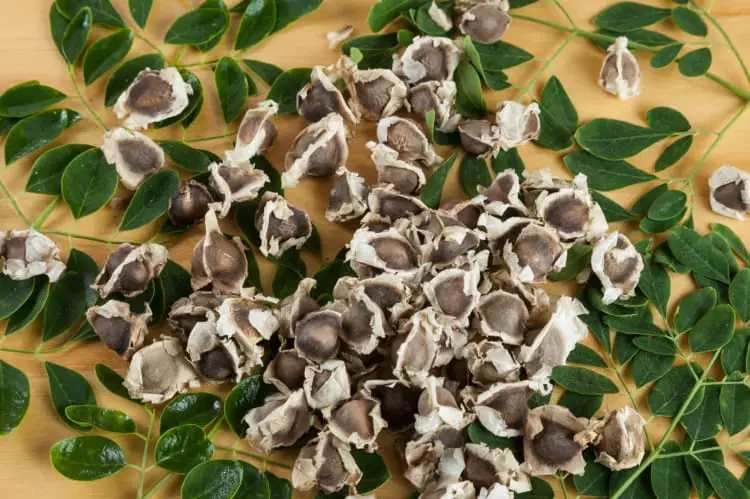
You’re basically making Moringa milk (similar to how you’d make almond milk) to purify drinking water.
Moringa seeds need to be fully ripe before you can use them. The seeds grow in pods that are up to a foot long. Inside the pod, you’ll find a row of round, brown seeds. You will need 50–150 mg of ground Moringa seed to treat 1 quart of water.
Remove the seed husks and crush them to a powder with a mortar or in a blender. Mix the powder with a bit of water and sieve it through a strainer covered with a clean cloth.
Add the milk that is left to the water you want to purify and stir vigorously for half a minute. For five minutes, stir the water regularly, then cover and leave it for at least an hour.
After the hour, you’ll see a clear separation with dirt on the bottom and clean water on top. Siphon the clean water from the top and drink or store it in clean, sealable containers.
Other Uses for the Moringa Tree
I’ll give you a brief overview of Moringa oleifera. For more in-depth information on this wonderful tree, I’ll refer you to Moringa Oleifera: The Miracle Tree.
Moringa trees quickly grow between 9 and 24 feet tall. They are hardy trees with a beautiful, ferny canopy. It makes for a great multi-purpose shade tree!
Besides purifying water, moringa is used as a folk remedy for stomach complaints, skin diseases, fatigue, anemia (it contains copper and iron), headaches, as a blood cleanser, and many other uses, as covered in the article linked above.
You can make paper from the leaves, and make your own plant growth hormone with an infusion of your Moringa leaves. You can eat the leaves fresh, or cook them in curries. The seeds can also be used to make oil for lubrication.
No wonder its other common name is the Miracle Tree!
A Note of Caution
While Moringa oleifera has been used for thousands of years as a natural remedy and for water purification, there’s not a lot of research on its medicinal properties. So do your homework.
Where to Source Water
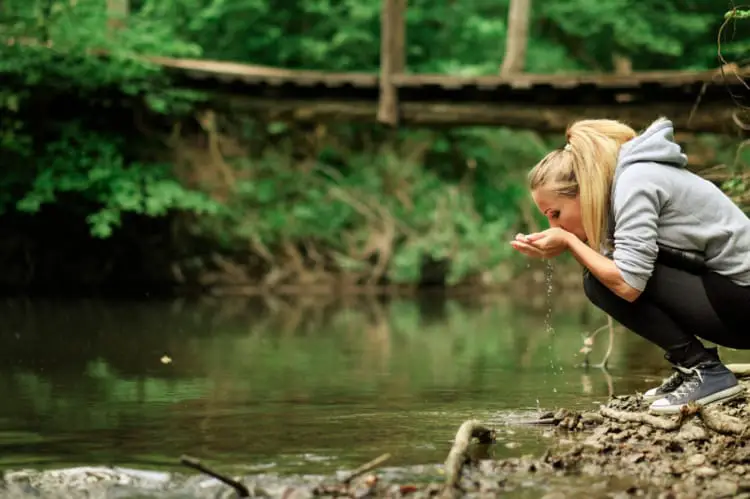
You should aim to get water from:
Water that is not muddy. Bacteria multiply quickly in mud.
Cool water. Bacteria love warmth, so try to get it from deeper water where temperatures are colder.
Flowing water sources. In still-standing or slow-moving water, the temperature is higher than in moving water, which promotes the growth of organisms.
Water above the vegetation limit. There are fewer organisms above the vegetation limit, and the risk of feces contamination is lower.
Non-urban areas.
How to Store Purified Water
Make sure you’re prepared to store purified drinking water by buying food-grade water containers or saving up plastic soft drink bottles.
Don’t use any containers that have milk or juice in them. Milk or juice containers can’t be properly cleaned, and you might have a bacterial problem on your hands.
7 Water Purification Tips
1. Close the Main Water Valve
Close the main water valve in your home as soon as you hear about any form of water contamination in your area.
Preventing contaminated water from entering your water pipes will allow you to salvage small amounts of precious water from the lowest faucets in your house, hot water tanks, etc.
2. Stockpile Bleach
Make sure you store a few bottles of unscented household chlorine bleach. Check the label on the bottles and make sure they contain a minimum of 5-6% sodium hypochlorite.
3. Sanitation
Bury human waste away from water sources, like rivers. Bury at least 8” deep and at least 200 feet away.
4. Increase Oxygenation
If boiled water tastes ‘flat’, promote some oxygen by pouring it from one bottle to another a few times. You can also add a pinch of salt to improve the taste.
5. Bleach Too Weak
After purifying water with bleach, you should be able to detect a slight bleach smell. If you can’t, dose the water with bleach again and leave it for 15 minutes.
If you still can’t smell it, do not use it. Find a different source of water instead and repeat the process.
6. Bleach Too Strong
If your water tastes too strongly of bleach, pour it from one container to another a few times, or leave it to sit for a while.
7. Stockpile Droppers
Add droppers to your emergency or bug-out bag! They’re invaluable for the proper dosage of bleach to purify water for survival.
Conclusion
Knowing how to purify water when disaster strikes is a crucial skill. As a result, you won’t need expensive filters or other setups to make sure your water is safe to drink.
There are several ways to purify your drinking water, but boiling water is your safest bet for killing bad pathogens.
If you can’t boil water, bleach it. Make sure you have a chart of bleach measurements and some droppers in your emergency bag so when the shit hits the fan, you’re prepared.
Save $4000+ on Water in a Crisis
Look, it’s no secret that a long-term drought has already started. And a stockpile of water is only going to last as long as the coming disaster.
Don’t be like the rest of the US population—woefully underprepared. There must be a way to save your loved ones, right?
Well, I found an unlimited source of clean, purified water. 26x cheaper than everything else…
And you can DIY. Learn how to generate, store, purify, mineralize, and remove deadly agents from water in this special report.
Moringa Water Purification Studies
- https://www.ncbi.nlm.nih.gov/pmc/articles/PMC5510207/ (download pdf)
- https://www.researchgate.net/publication/224775430_Effectiveness_of_Moringa… (download pdf)
- https://iopscience.iop.org/article/10.1088/1755-1315/31/1/012033/pdf (download pdf)
- https://honors.libraries.psu.edu/files/final_submissions/1394 (download pdf)






